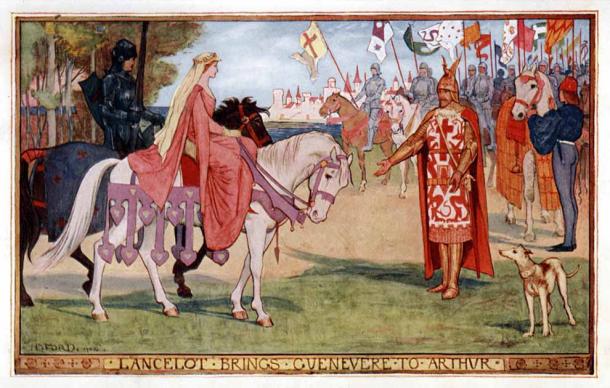Authors have given Queen Guinevere of the Arthurian stories a wide variety of personalities; she has been varyingly portrayed as seductive, faithful, “fallen,” powerful, powerless, an inheritor of a matriarchal tradition, weak-willed, and strong-willed.1 These personalities span eight centuries and are the products of their respective times and authors much more so than of any historical Guinevere. Despite this, however, threads of similarity run throughout many of the portrayals: she had power in some areas and none in others; she was involved in a courtly romance; and she did not produce an heir to the throne. None of these were unique to her, either; either stereotypes or literary convention demanded them all. I examine Guinevere’s portrayals by three influential medieval writers, Chrétien de Troyes, Marie de France, and Sir Thomas Malory, compare them to historical queens, and show that although their representations of her emphasized different aspects, together they add up to a portrait of a medieval literary queen both stereotypical and human. (Read more.)
I never heard that the Cathars worshipped "Sophia" or "Wisdom." They worshipped the "Good God" but believed that the "Demiurge" was equally or almost as powerful. From Ancient Origins:
The earliest mention of Guinevere is in Geoffrey Monmouth’s History of the Kings of Britain . This book laid out the basics of the traditional Arthurian legend that later authors would use as a source for elaboration. It includes many of the legend’s central characters, but in more basic and less detailed forms.
This text refers to Guinevere as Gwenhuvara, which comes from the Welsh name Gwenhwyfar. The meaning of the name is not known, but we do know it references a female figure from Welsh mythology famed for her bad reputation. The name was associated with the idea of infidelity, and as such, was still used as a way to insult a young woman’s character up until the end of the 19th century.
In Monmouth’s version, Guinevere is simply described as Arthur’s queen and a great beauty descended from the Romans. According to the tale, Arthur leaves Camelot to wage war in Europe and leaves his wife and kingdom in the care of his traitorous nephew, Mordred. Mordred wastes no time in seducing Guinevere and taking the throne for himself. When Arthur returns, Guinevere flees the kingdom due to feelings of guilt and joins a nunnery. Mordred and Arthur go on to duel it out in a great battle that ends with them both mortally wounded.
Monmouth never goes into detail about the affair between Mordred and Guinevere. Authors who came slightly later, like Wace (1110-1174 AD) and Layamon (12th-13th century), were less generous in their depictions of Guinevere. These authors showed her as complicit in the coup. Most contemporary writers disagreed with this take, however, and usually depicted her as having been abducted by Mordred and being forcefully seduced. From these early versions of the tale, it is hard to learn much about Guinevere. She is never given much characterization; she primarily acts as a plot device. All we can really discern is that her character may be at least partly based on a figure from Welsh mythology . (Read more.)
Share



















1 comment:
I believe he word Guine and Queen are historically the same word.
Post a Comment